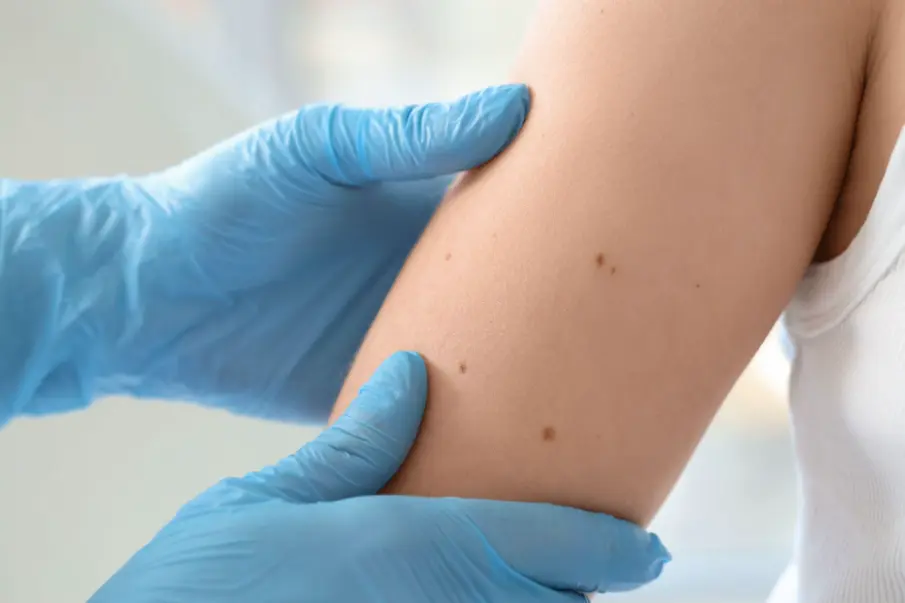What Is Mohs Surgery and Why Is It Recommended?

When faced with a skin cancer diagnosis, the treatment options can seem overwhelming. Excision, Cryosurgery, Electrodessication and Curettage, it’s a lot to process while battling fear and uncertainty. Among these options, Mohs micrographic surgery consistently stands out. This innovative procedure has transformed how dermatologists approach certain types of skin cancer. With less scarring than other options and cure rates as high as 99% for specific cases, it’s often the go-to for high-risk cases.
But what makes Mohs surgery so revolutionary, and why is it often recommended?
A Closer Look at Mohs Surgery
Developed by Dr. Frederic Mohs in the 1930s, this surgical technique has come a long way from its early days. Today, it’s well known to be a highly effective treatment for two of the most common types of skin cancer: basal cell carcinoma and squamous cell carcinoma. What sets Mohs surgery apart is its meticulous attention to detail, combining surgical expertise with immediate microscopic analysis.
How Does Mohs Surgery Work?
The process is truly fascinating. Imagine peeling an onion layer by layer—essentially what happens during Mohs surgery. The surgeon removes a thin layer of tissue and then examines it under a microscope to check for cancer cells. This process is repeated until no cancerous cells appear in the layers. By taking this step-by-step approach, the surgeon ensures that all cancer is removed while leaving as much healthy tissue as possible untouched. It’s like targeting the bullseye of a dartboard without scratching the surrounding surface.
What Makes Mohs Surgery So Effective?
- Astounding Cure Rates
Mohs surgery has a proven track record of cure rates of up to 99% for newly diagnosed skin cancers and remains highly effective for cancers that have recurred. This level of success is unmatched by other treatment methods. - Focused Precision
Preserving healthy tissue is critical, especially for visible or functional areas like the face, hands, or scalp. Mohs surgery focuses solely on removing the cancerous cells, leaving the surrounding tissue intact, reducing scarring, and enhancing the cosmetic result - Lower Risk of Recurrence
Because each layer of removed tissue is meticulously examined, there’s little room for error. This dramatically reduces the risk of cancer returning.
Who Benefits Most from Mohs Surgery?
While Mohs surgery is the best option in many cases, it’s especially beneficial in specific scenarios. Patients with skin cancer in areas where conserving tissue is crucial—like the nose, lips, ears, or hands—are excellent candidates. Additionally, this method is ideal for large, aggressive, or recurrent cancers, as well as those with indistinct borders.
What to Expect Before, During, and After
Before Surgery
After a thorough examination, your dermatologist will discuss whether Mohs surgery is the best choice for your specific case. This initial consultation helps set expectations and answer any questions regarding risks and benefits.
During the Procedure
Mohs surgery is usually an outpatient procedure, which is more convenient for most patients. You’ll likely go through multiple stages as tissue is carefully removed, examined, and processed. While the process may take a few hours, many patients appreciate immediate results and are willing to endure lengthy procedures for peace of mind.
After Surgery
The recovery process is relatively easy since the healthy tissue is left intact. Depending on the treatment area and individual healing, your dermatologist may discuss options like scar revision or skin grafting.
Why Mohs Surgery Is a Trusted Choice
Mohs surgery offers more than just a high success rate. Patients can feel confident knowing their treatment is tailored to eliminate cancer while preserving their appearance and function, which is priceless. The combination of surgical precision, innovative techniques, and long-term effectiveness makes it a standout option.
Is Mohs Surgery Right For You?
Facing skin cancer is challenging, but advancements like Mohs surgery provide hope and reassurance. Mohs surgery could be the answer for a new diagnosis or seeking treatment for a recurrent issue. Talk to your dermatologist to see if this cutting-edge procedure aligns with your treatment goals. After all, when it comes to your health and well-being, settling for anything less than the best isn’t an option.
More to Read:
Previous Posts:








